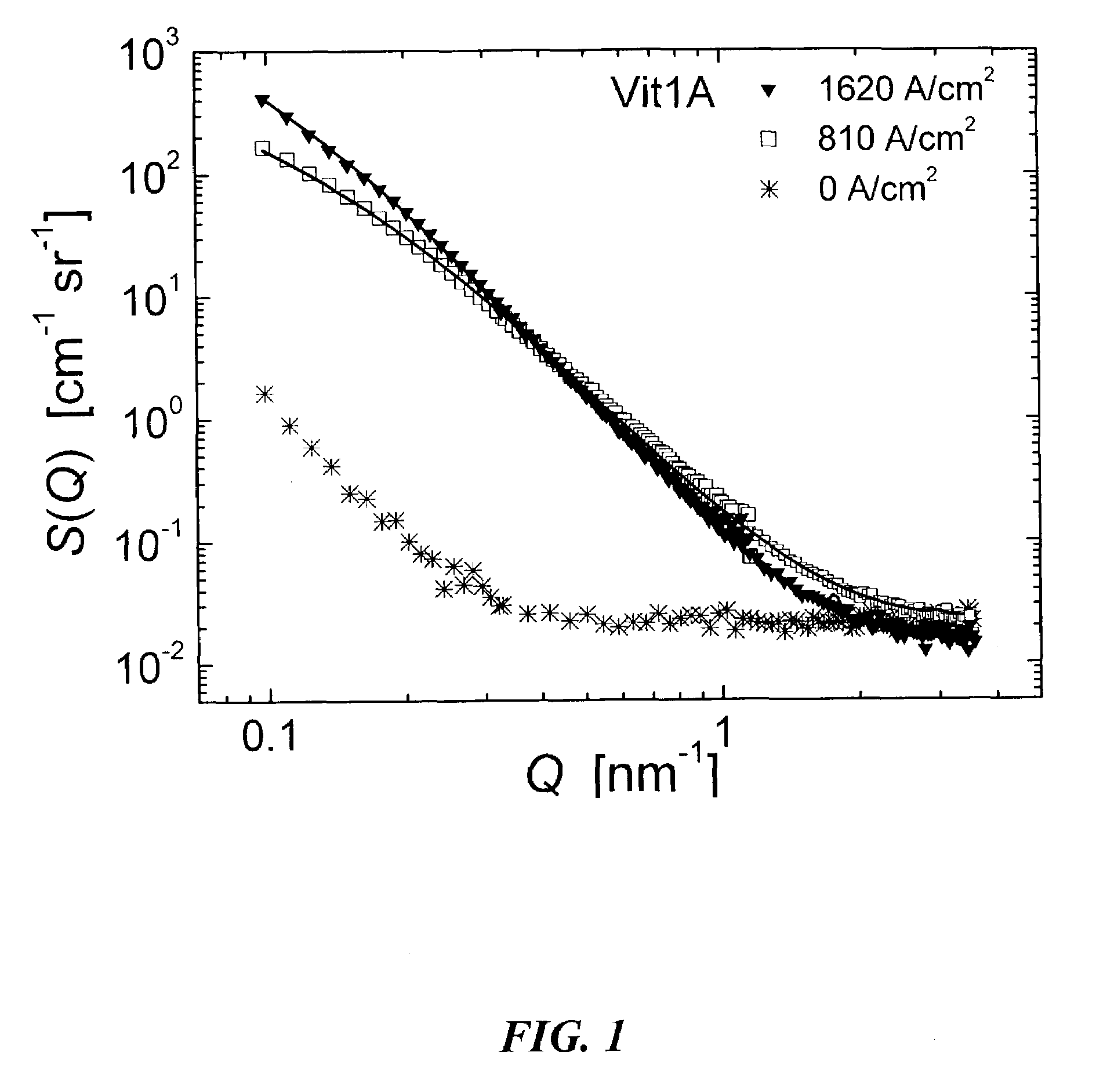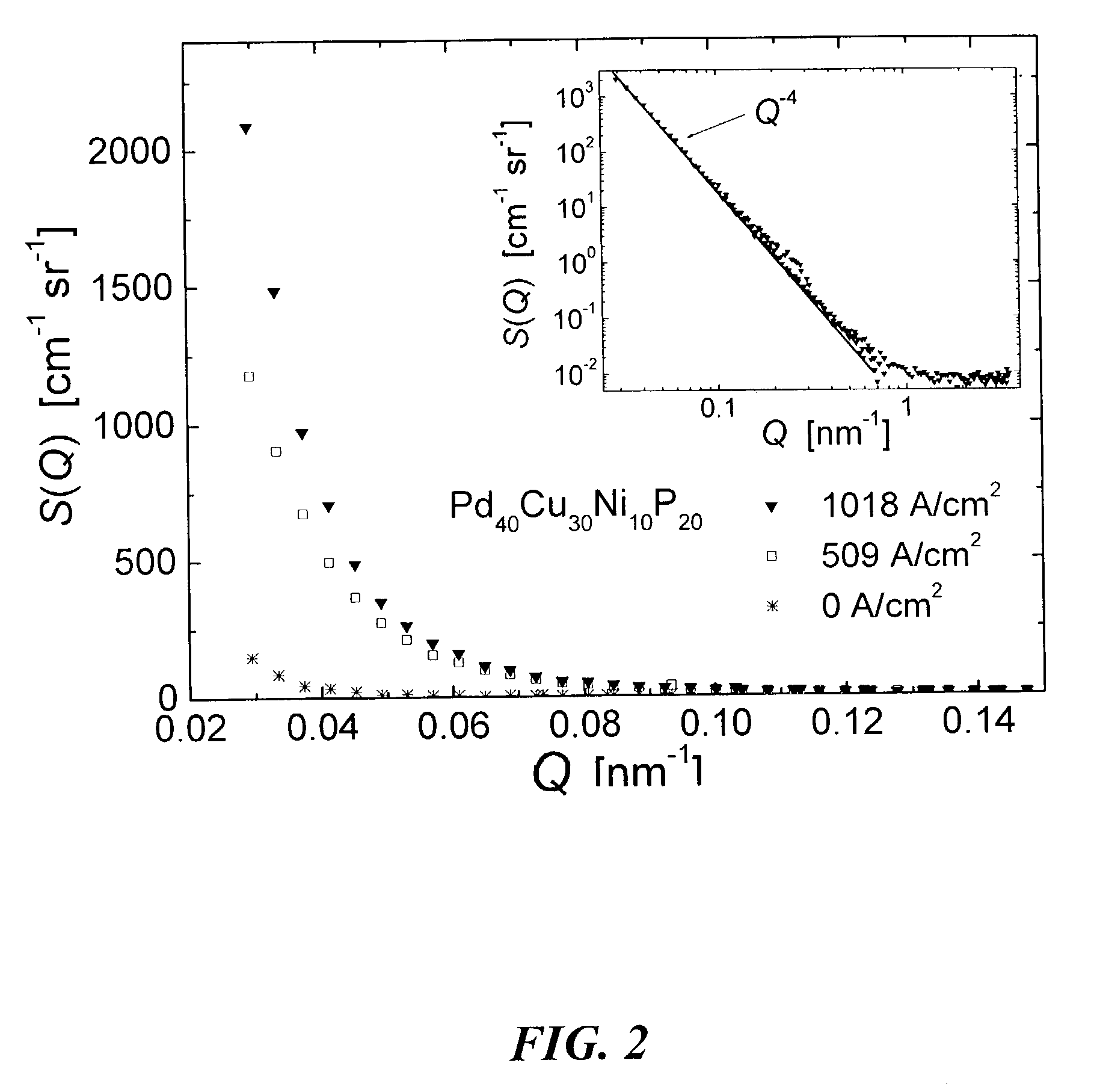Metallic glasses with crystalline dispersions formed by electric currents
a technology of electric current and crystalline dispersions, applied in the field of metal glasses and nanotechnology, can solve the problems of undesirable or desirable phase changes, and achieve the effects of low risk of undesired crystal growth, high degree of control, and high volume fraction of crystallites
- Summary
- Abstract
- Description
- Claims
- Application Information
AI Technical Summary
Benefits of technology
Problems solved by technology
Method used
Image
Examples
examples
[0043]The following experiments illustrate the use of a DC current to form crystallites in two metallic glasses. One of the glasses had the empirical formula Zr42.6Ti12.4Cu11.25Ni10Be23.75, has a critical cooling rate of 1 K / s, a glass transition temperature of 628 K (355° C.) at a heating rate of 10 K / min, and a ΔT (the difference between the crystallization temperature and the glass transition temperature) of about 97 K, and is a glass known to undergo decomposition (phase change) before crystallization. The other glass had the empirical formula Pd40Cu30Ni10P20 (referred to hereinafter as “PCNP”), has a critical cooling rate of less than 1 K / s, a glass transition temperature of 582 K (309° C.) at a heating rate of 10 K / min, and a ΔT of about 88 K, and is believed to crystallize by classical nucleation and growth, i.e. without decomposition. The Zr-based glass was a product obtained from Howmet Research Corporation (Whitehall, Mich., USA) and identified by the product name Vit1A. T...
PUM
| Property | Measurement | Unit |
|---|---|---|
| diameter | aaaaa | aaaaa |
| diameter | aaaaa | aaaaa |
| diameter | aaaaa | aaaaa |
Abstract
Description
Claims
Application Information
 Login to View More
Login to View More - R&D
- Intellectual Property
- Life Sciences
- Materials
- Tech Scout
- Unparalleled Data Quality
- Higher Quality Content
- 60% Fewer Hallucinations
Browse by: Latest US Patents, China's latest patents, Technical Efficacy Thesaurus, Application Domain, Technology Topic, Popular Technical Reports.
© 2025 PatSnap. All rights reserved.Legal|Privacy policy|Modern Slavery Act Transparency Statement|Sitemap|About US| Contact US: help@patsnap.com



